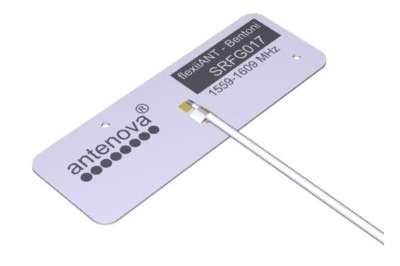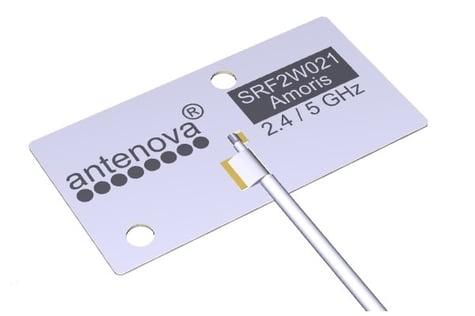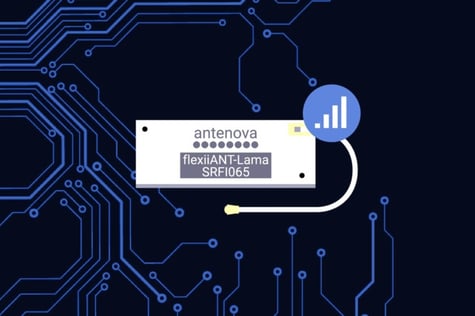In the fast moving commercial world we live in, timing the launch of a device can be the biggest single determinant of its success. For a first-generation device, catching that all-important market window will ensure a device is perfectly positioned to generate sales. Too late, and the market may awash with substitute products, too early, and there may be too few buyers to get a return. Shipping at the height of demand, with a cost-effective, great quality device is the aim, but antennas and RF often cause complications that can impede on the success of a project.
When working on a short timeline, where there is little room for error, taking shortcuts when integrating an antenna can cause performance issues. But when working with a flexible printed circuit (FPC) antenna, there’s far more flexibility and integration can be much easier. FPCs can get devices approved and certified quickly, without expensive tooling and non-recurring engineering (NRE) costs associated with laser direct structure (LDS) antennas.
In this article, we'll be looking at what these antennas are, their benefits, and how to approach a first-generation design cycle with FPCs.
Wireless integration for first-generation devices
Launching a first-generation device comes with unescapable risk – both financially and technically. For antennas, they need optimised operating environments to perform well. This means taking care over each step of integrating an antenna is the only way to ensure it performs well. For an embedded antenna, placement, ground plane clearance, matching, tuning are all critical steps.
In our experience, wireless connectivity can be one of the most challenging aspects to a design. One of the most common mistakes made is that antennas are ‘added’ into an existing design, or, worse still, integrated towards the end of a project. This very often means that the PCB is inadequately optimised for wireless performance, which can render a product to perform badly, fail to function properly and worse, still be unable to meet carrier certification. With the speed required to ship a device quickly, it is common for seemingly minor factors to be overlooked, which can have devastating consequences – even companies with huge budgets can make mistakes (even Apple re: “Antennagate”).
When the stakes are so high, it can be invaluable to take an intelligent approach to antenna selection and integration. For small devices, which comprise much of IoT, choosing an antenna that’ll deliver great results for your early adopters is important. And that is where FPC antennas come in.
Introducing FPC antennas
Flexible circuit antennas offer a unique blend of the integration flexibility of an embedded antenna, along with the ease of integration and performance levels of an external (terminal) antenna.
The flexible circuit enables the antenna to be positioned in a variety of configurations, such as co-planar to the host PCB, horizontally or vertically. With an adhesive strip, they affix easily in each of these placements. By design, they can be bent to fit concave or convex sections of a product’s housing, enabling them to be positioned where it’s most convenient and where there is ample space.
With surface mount antennas, sacrificing ground plane clearance, optimal placement and matching circuitry will directly reduce the performance of the antenna. Surface mount antennas come with a more complex integration process, which means we often advocate identifying, integrating and testing an antenna early on in the design cycle.
By comparison, FPCs connect to a module with connectors adopting the UFL standard and countless others. When it comes to flexibility in integration, it is hard to beat them. For more practical information on the integration of FPC antennas, download our full guide to learn how to get the highest levels of performance out of these antennas.
Why FPCs work so well for first-generation devices
There’s a sizable financial risk that comes with launching a new line of products. Most of the project costs come long before a single unit can be sold. Tooling costs, for one, include the cost of laser direct structuring antennas, which are hybridised antennas-come-product housings. The expense of these can be extraordinary, which makes this option unappealing for first-generation device launches, especially if there is not a multi-million dollar budget backing it up.
FPCs therefore offer a great middle-man solution. They’re a perfect fit for small devices that are being produced in medium-low volumes, without sacrificing performance.
Other benefits:
- Customisable cable length
- Plug’n’play integration
- Does not necessarily require tuning (although recommended)
- Easier integration than a SMD antenna
- Not ground plane dependent, unlike SMD antennas
- Insufficient board space for an SMD antenna – makes it quicker
Moving beyond small volume manufacturing
With the great levels of wireless performance offered by FPC antennas, it will put your first-generation device at a significant advantage. With happy customers, it will eventually become time to examine ways to improve the manufacturability and reduce the unit costs of your device. This is when it may be time to consider an embedded antenna, which has significantly lower unit costs and can still perform well when they are optimally integrated. With a significant volume, you will also be in a good position to request custom antennas and integration services, with the minimum order quantities (MOQs) that often apply with these bespoke solutions.
Find the right FPC antenna for your project
Antenova is leading the way for flexible circuit antennas, with a selection of FPC antennas designed specifically for a wide range of wireless technologies. The product family, flexiiANT, has options that cover Wi-Fi, Bluetooth, Cellular, ISM and LPWAN bands, enabling devices of all categories to benefit from these antennas.
Antenova’s flexiiANT family has been created under the company’s designed for integration ethos. This ethos means that Antenova antennas are made specifically to speed up the integration process, with minimal fuss and optimal performance.
For more information about flexiiANT, see the full range or get in touch with your local Antenova sales representative to learn more about these innovative antennas. Antenova offers bespoke design and custom tuning options exclusively to customers, so get in touch for more information.




